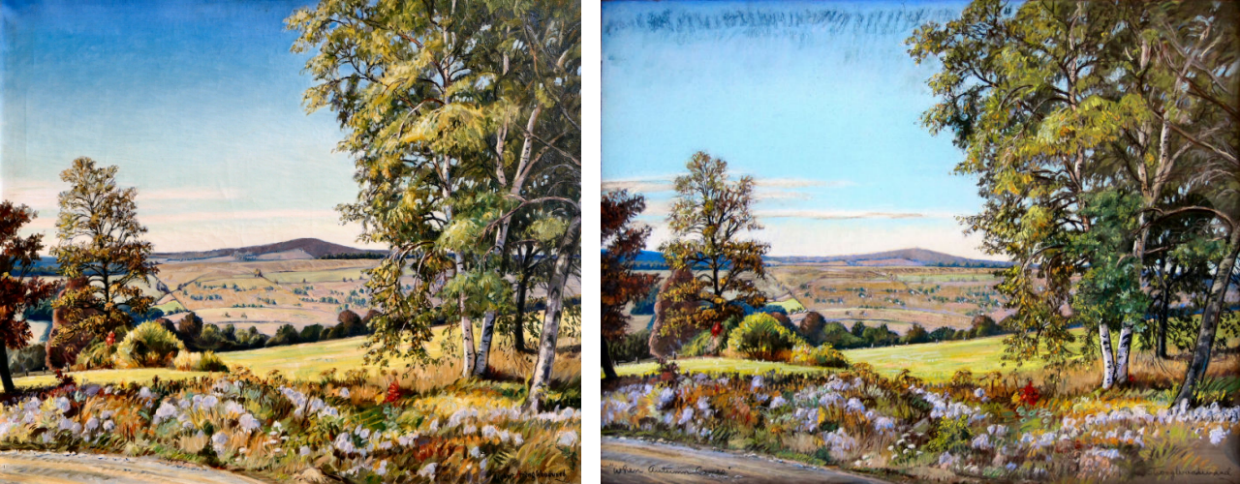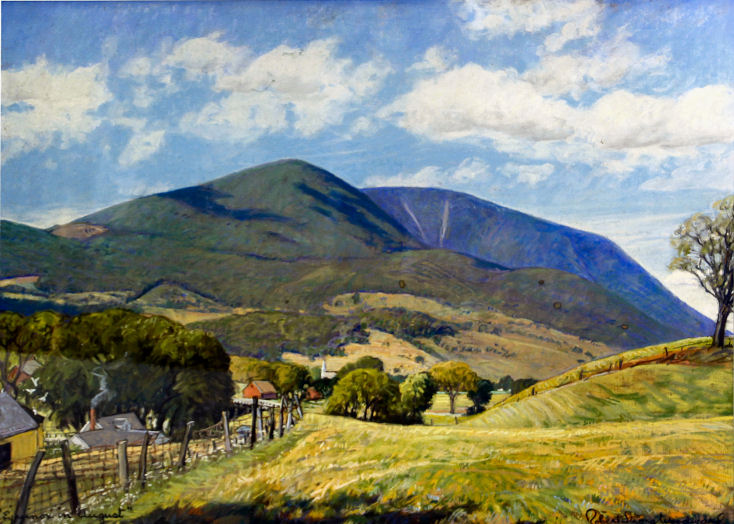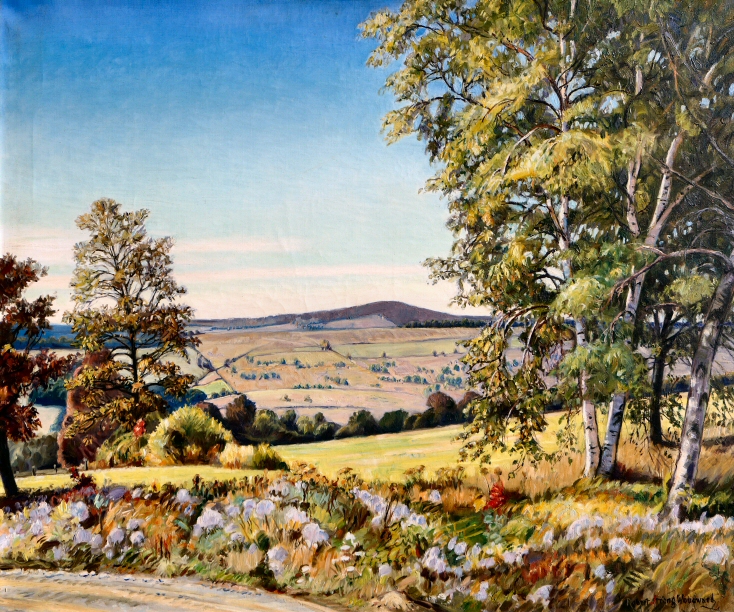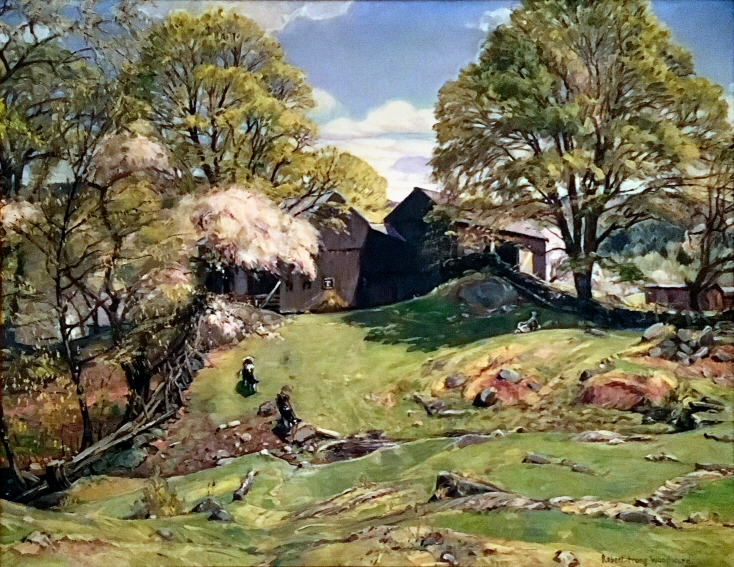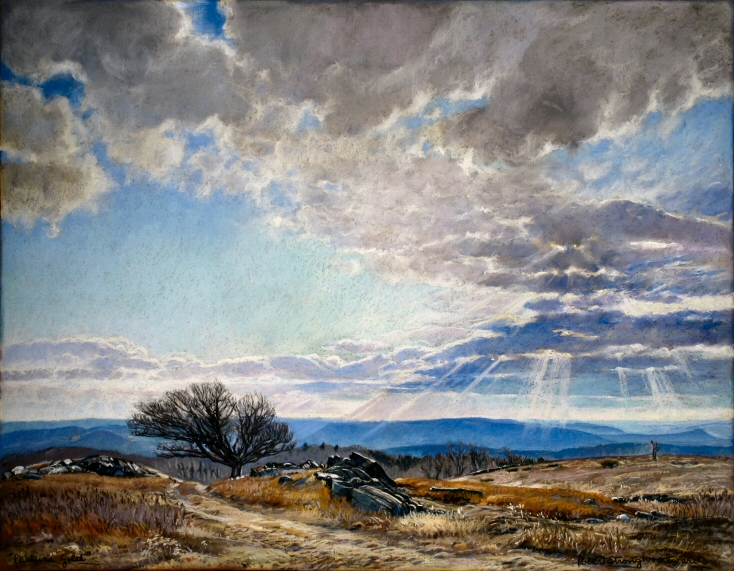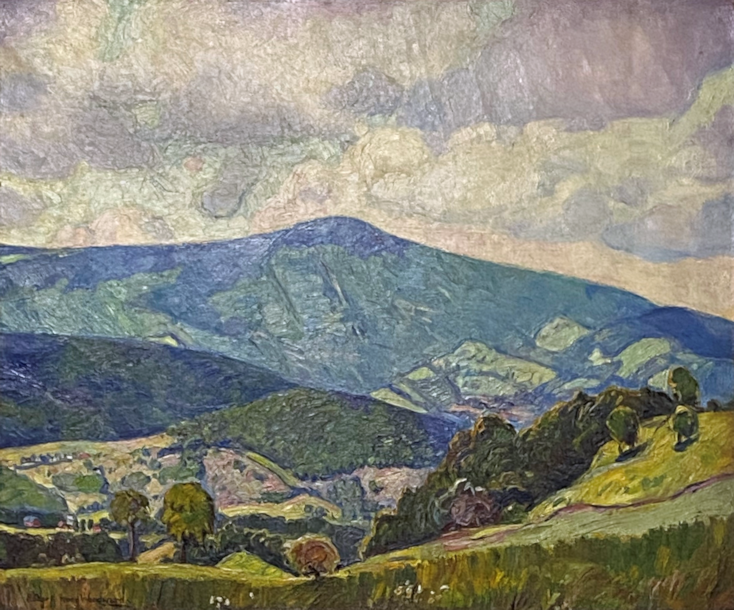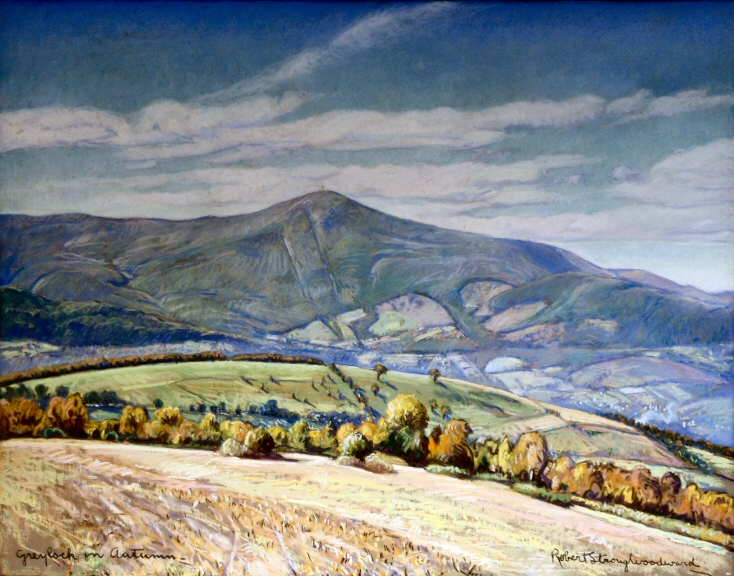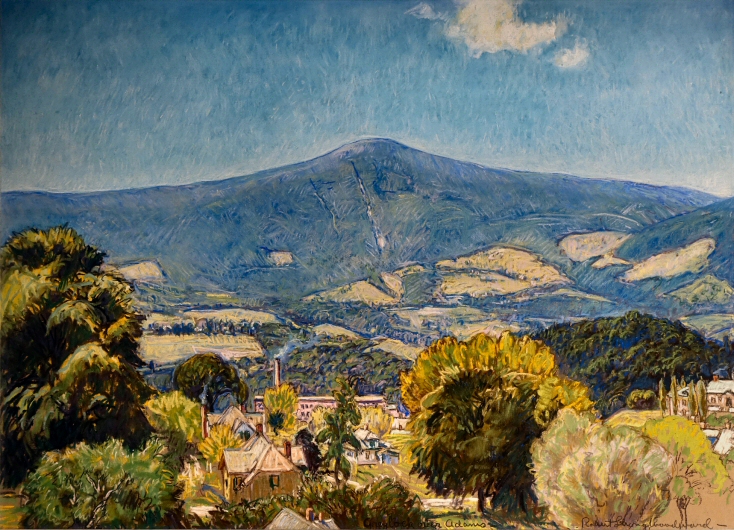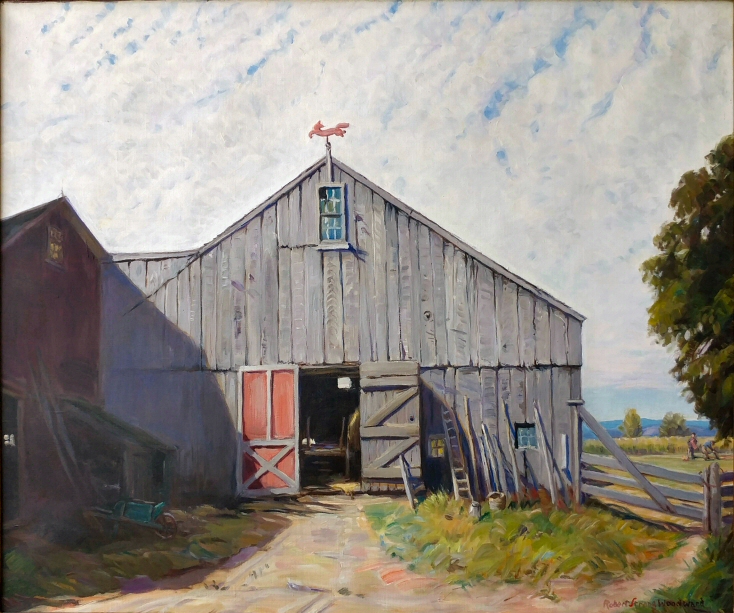Quick Reference
Prior to 1925
Adams or North Adams, MA
Oil on Canvas
Landscape
Mountains
25 x 30
NA
Unknown
NA
Featured Artwork: Unnamed: Drama Over Greylock
Diary Comments
None. This painting is signed in the lower left corner of the canvas, however, its name is unknown. For more see the Additional Notes section below.
Additional Notes
This painting is signed but its name is unknown. When it was framed a protective backing was secured to the verso of the frame
hiding where RSW would have most likely written its name on the stretcher. The owners, understandably, do not want to remove the backing.
We know that it is Mt. Greylock in Adams, MA. We can match to two other pieces of Greylock, Greylock in Autumn (1924), to the right and
Greylock Over Adams (1927-'28) below and to the left. The clearings at the foot of the mountain, as well as the double slashing scars on
its face make it undeniable. There are only 5 known paintings, three chalk drawings, another oil painting and this piece (chalk drawing are also called
paintings).
What is also not known is the year this painting was made. We believe it was fairly early in Woodward's career for a couple reasons aside from its
glossy finish. The first reason is the style. The sky informs us the most. While the picture is not the best quality, one can see that the paint is thick and
heavily applied in an impasto method. Greylock itself and the valley below it is primarily impressionistic. Even the trees in the foreground of the scene
are impressionistic. However, the painting is tonalistic. Tonalism is a derivative of impressionism and it was Woodward's preference as it is an express
of light array rather than color.
This is an important distinction. Many people mistake Woodward as being an impressionist and this
would be incorrect. Woodward, philosophically, is far more interested in expressionism- atmosphere and circumstance- than abstrations of shape and
form of impressionism.
The second
reason we believe this painting was made prior to 1925 (possibly as early as 1921) is that the years of 1924 and 1925 were the years Woodward's new
style begins to reveal itself with paintings such as The Flying Fox (1925). A dramatic change from
tonalism to luminism.
Coincidentally, the chalk drawing, Greylock in Autumn, is the earliest example we have of Woodward's
pastels. (It is the oldest we know about.) Woodward's move towards luminism is actually inspired by the pastels. Pastels are the truest expression of color
of any medium. Woodward's aspiration is to merge his oils with the look of his pastels like Greylock in Autumn, and this begins around 1924
and through a lot of experimentation takes a course that leads to what we know today as Woodward's signature look from 1933 on... SEE BELOW
